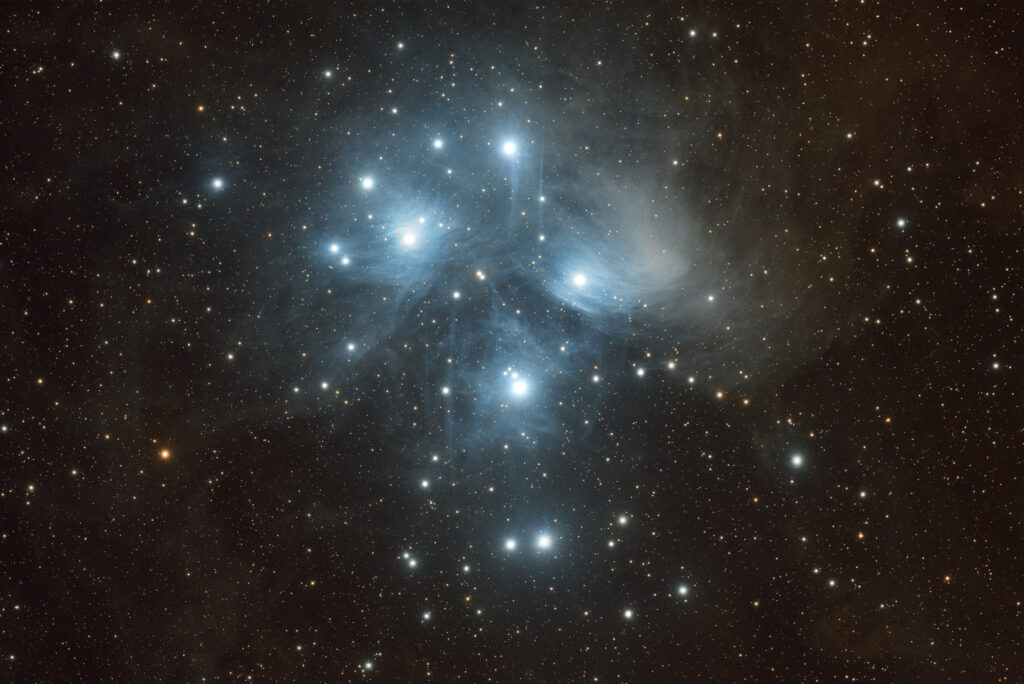
M45 aka The Pleiades, The Seven Sisters, Subaru (ever noticed the Subaru car logo?) FSQ-106ED with QHY268C
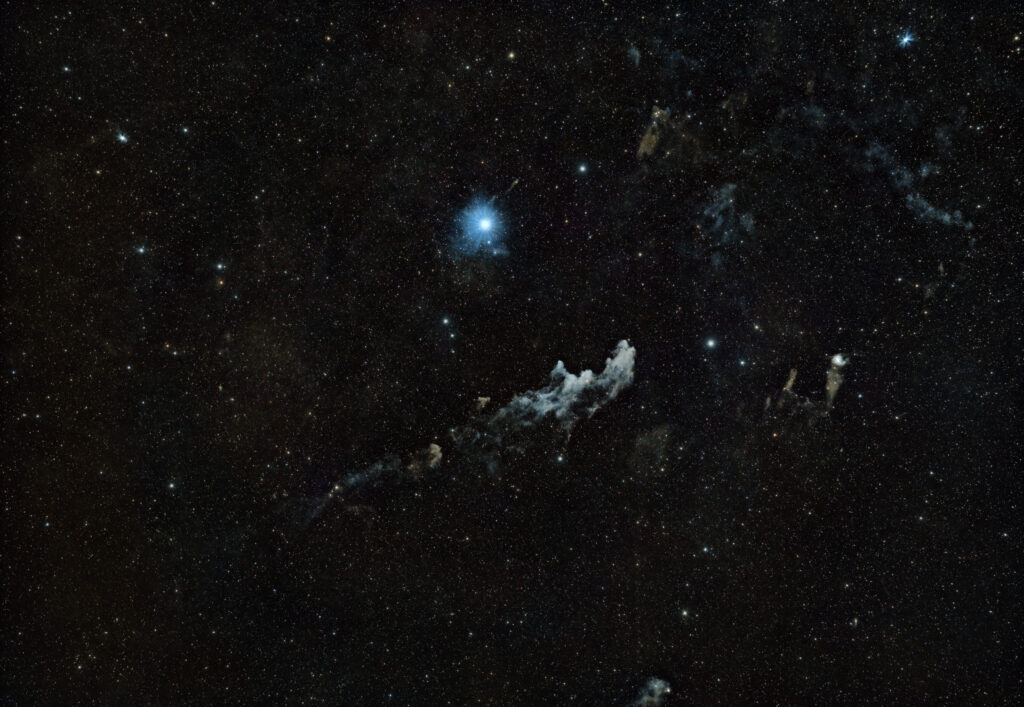
The Witches Head in Orion – Truly a difficult target and I pushed harder than the skies allowed. Canon R6 with Rokinon 135mm
IC 1805 / Sharpless 190, more commonly known as the Heart Nebula, lies approximately 7,500 light years from Earth. This data set was comprised of 43x20min Ha, 23x20min O[III], and 24x20min S[II] for a total exposure time of 30 hours over several nights in November 2019.
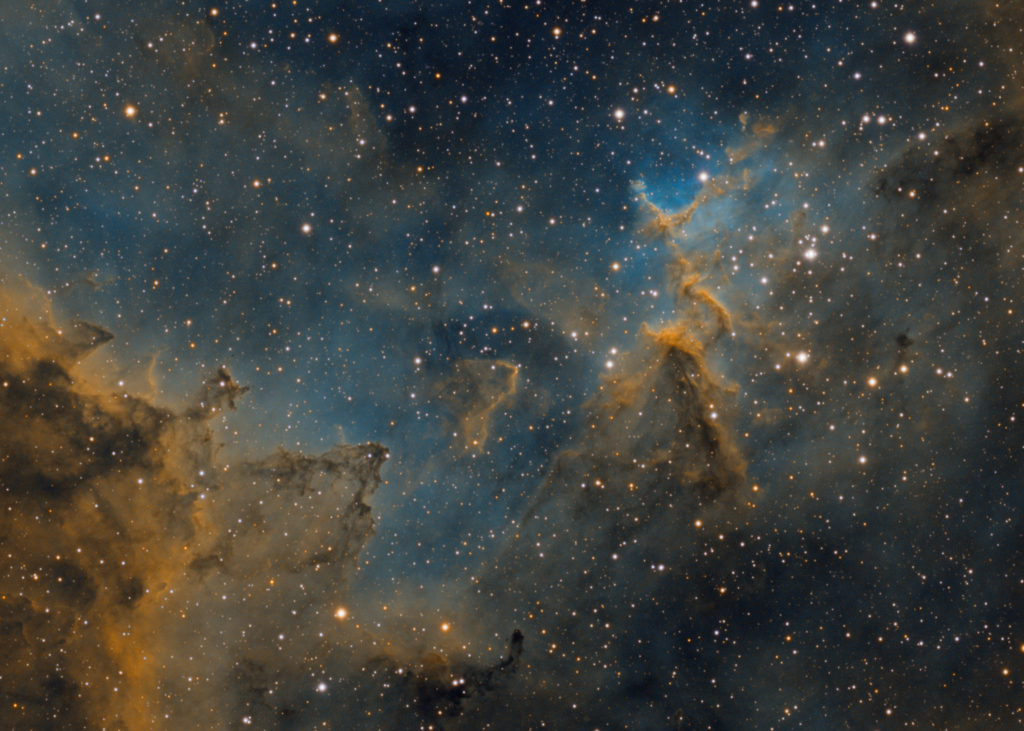
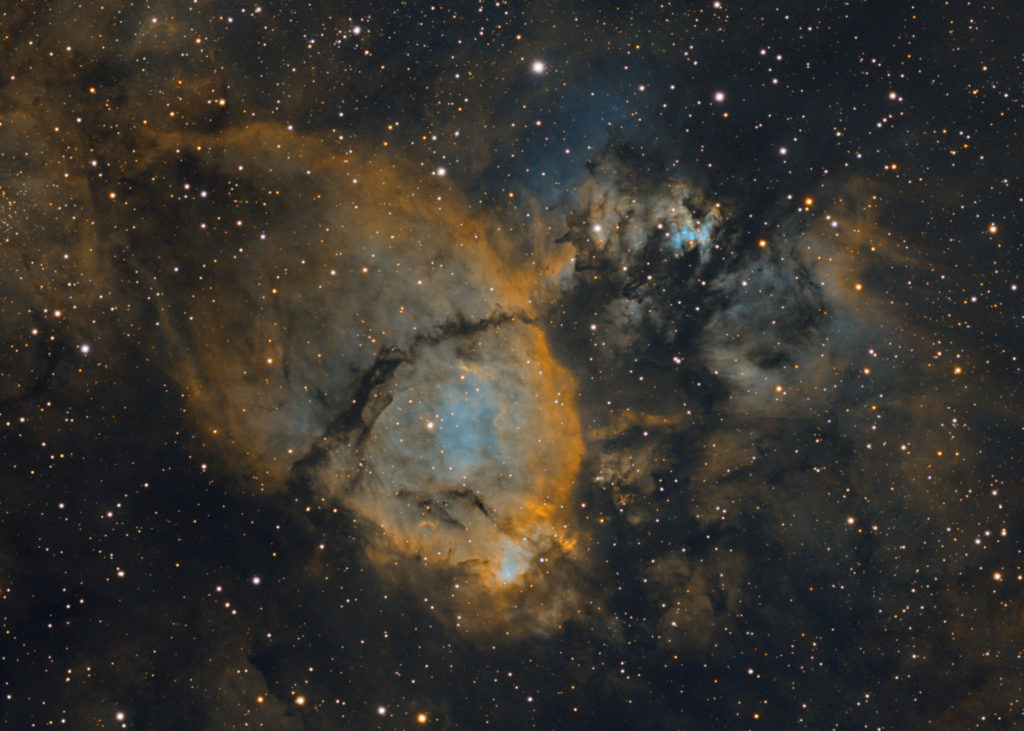
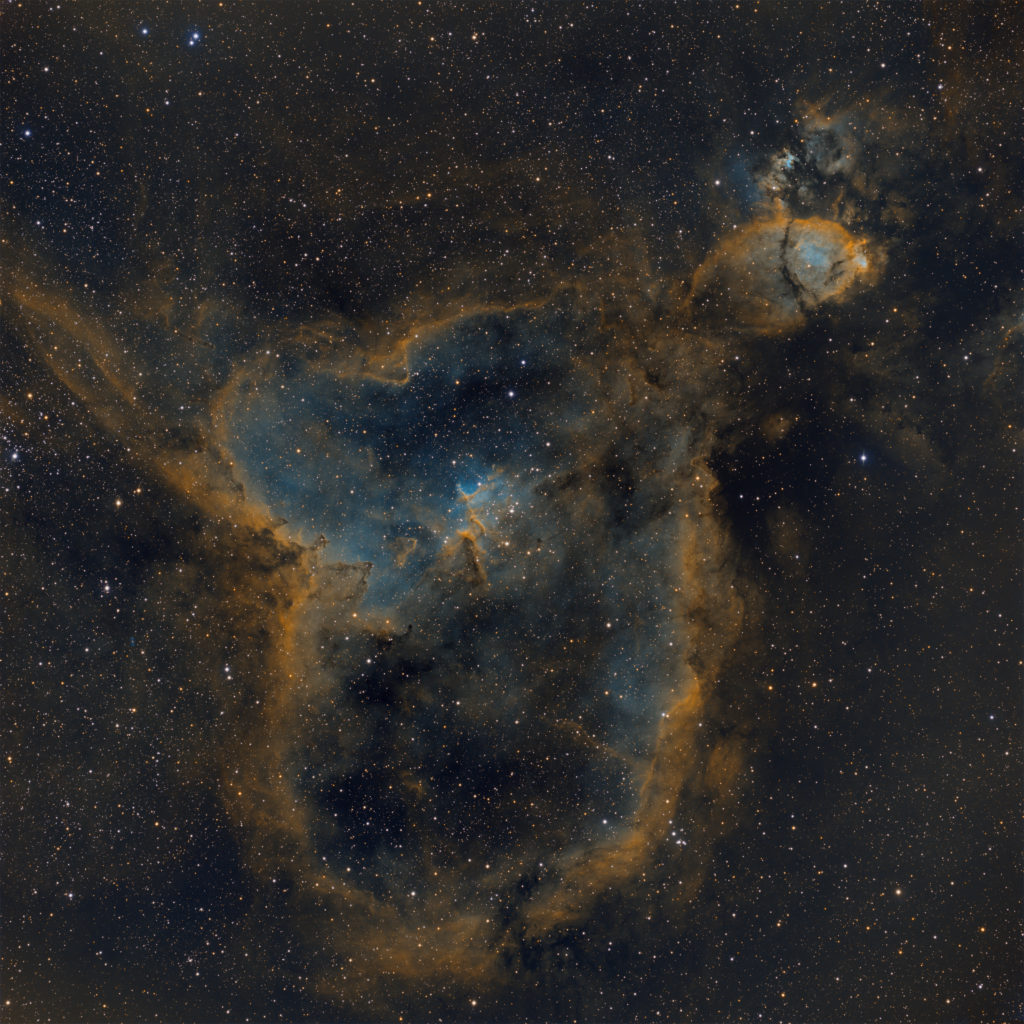
We had some great weather for the annual star party at Pickett State Park, TN last new moon. This star party is still young and looking to grow. The park rangers are doing a great job, it’s a great venue for presentations and a great field for observing / photography. I’m not sure why it still remains a hidden gem of sorts.
Overall sky quality, other than some early clouds, was excellent. With SQM measurements around 21.77 mag/arcsec^2 this was the darkest I’ve seen Pickett. I would note too that of the other dark sky sites I routinely visit, this quality of night is nothing to complain about.

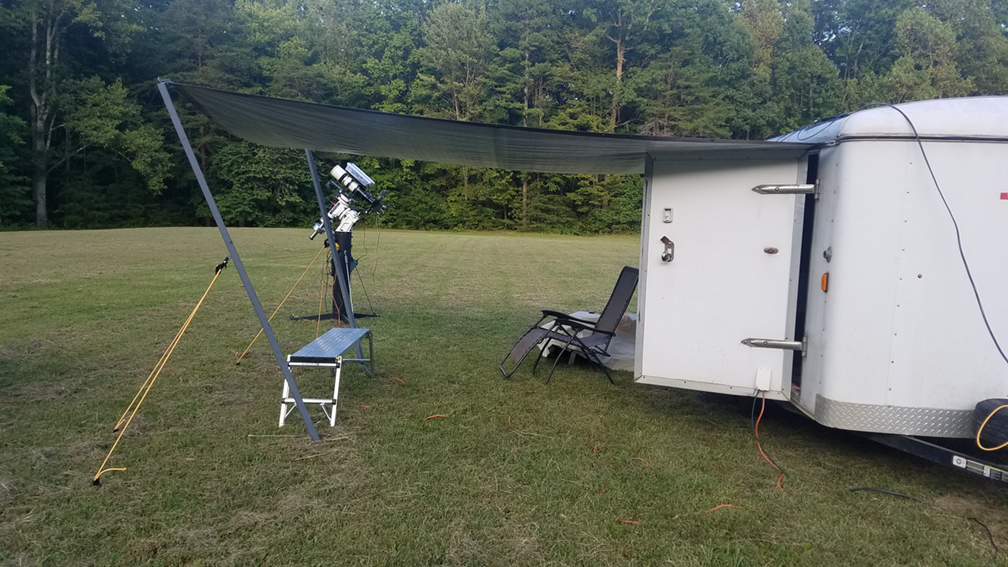
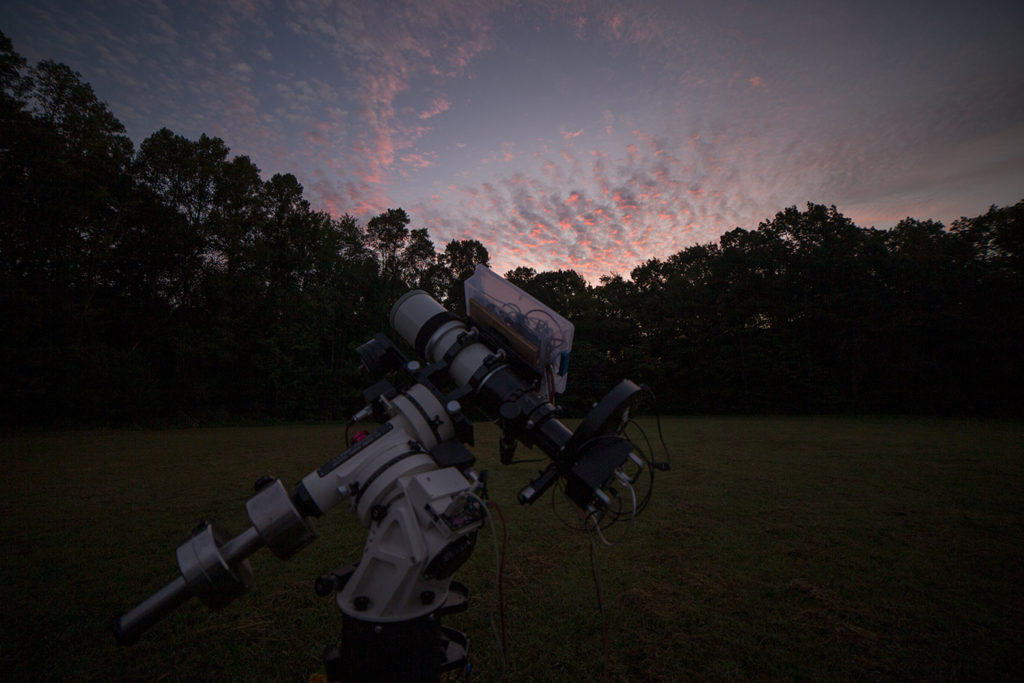
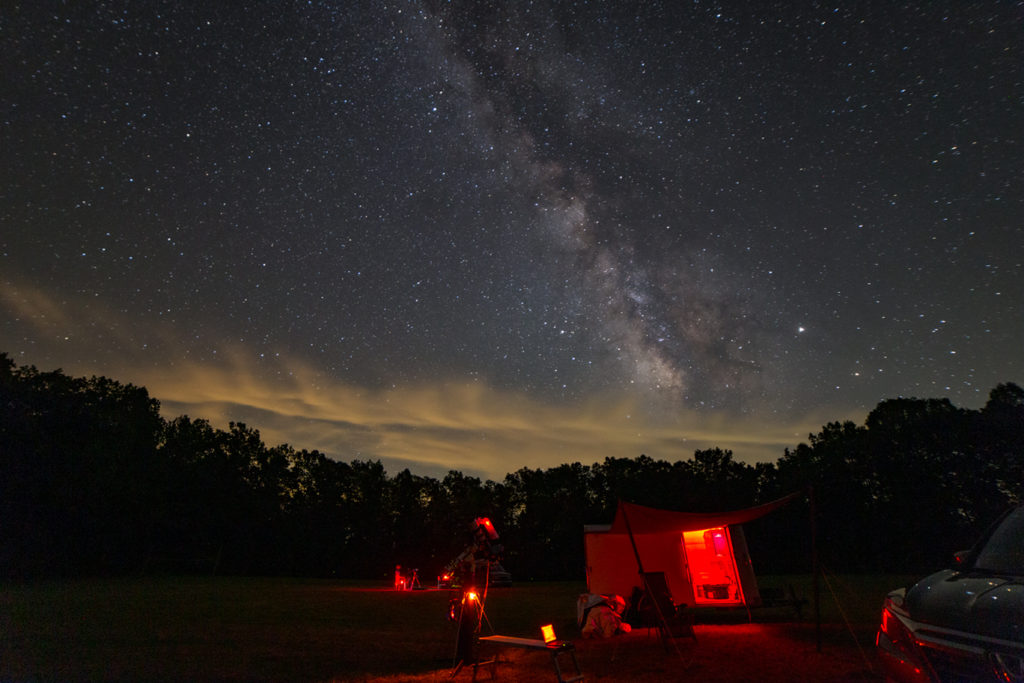
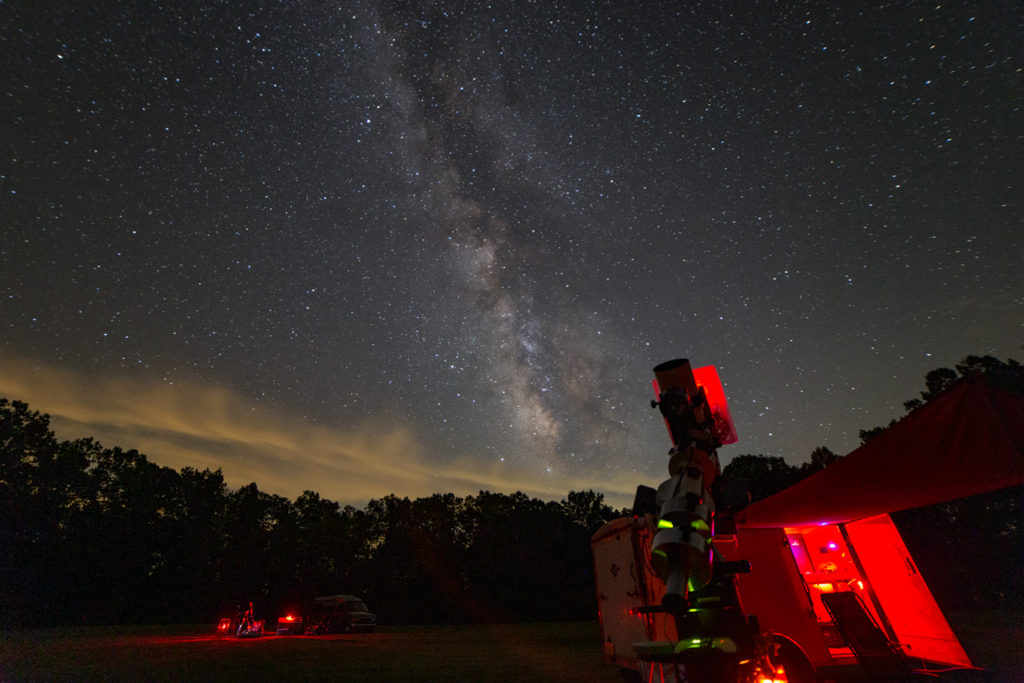
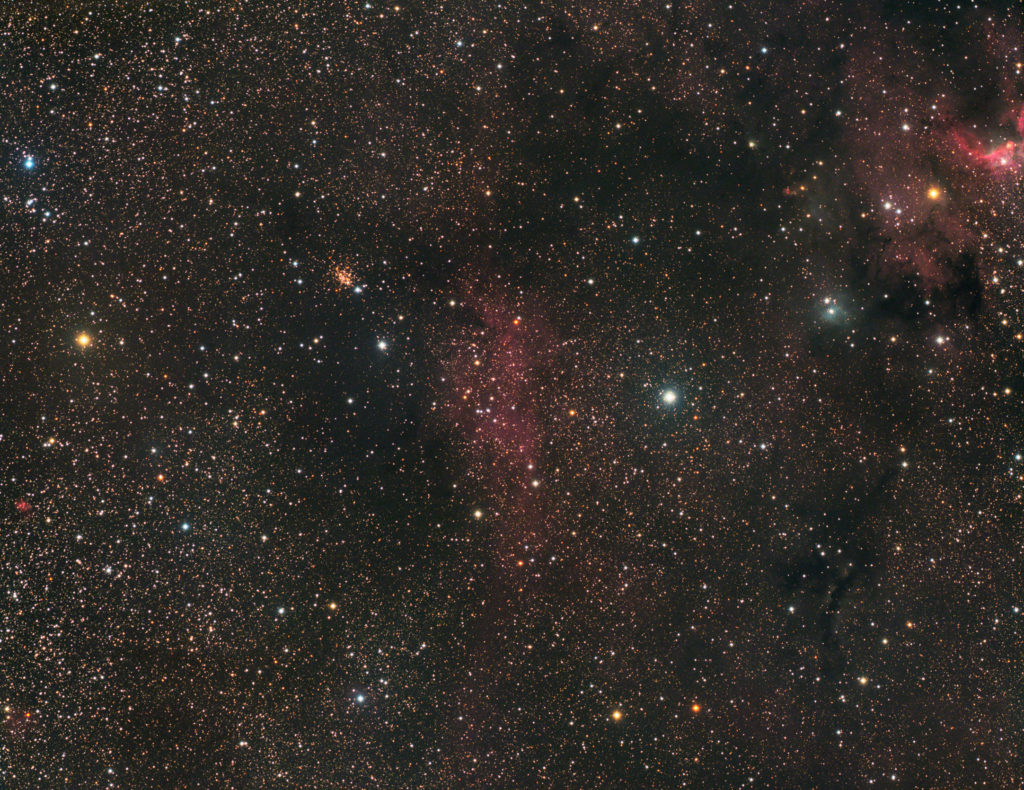
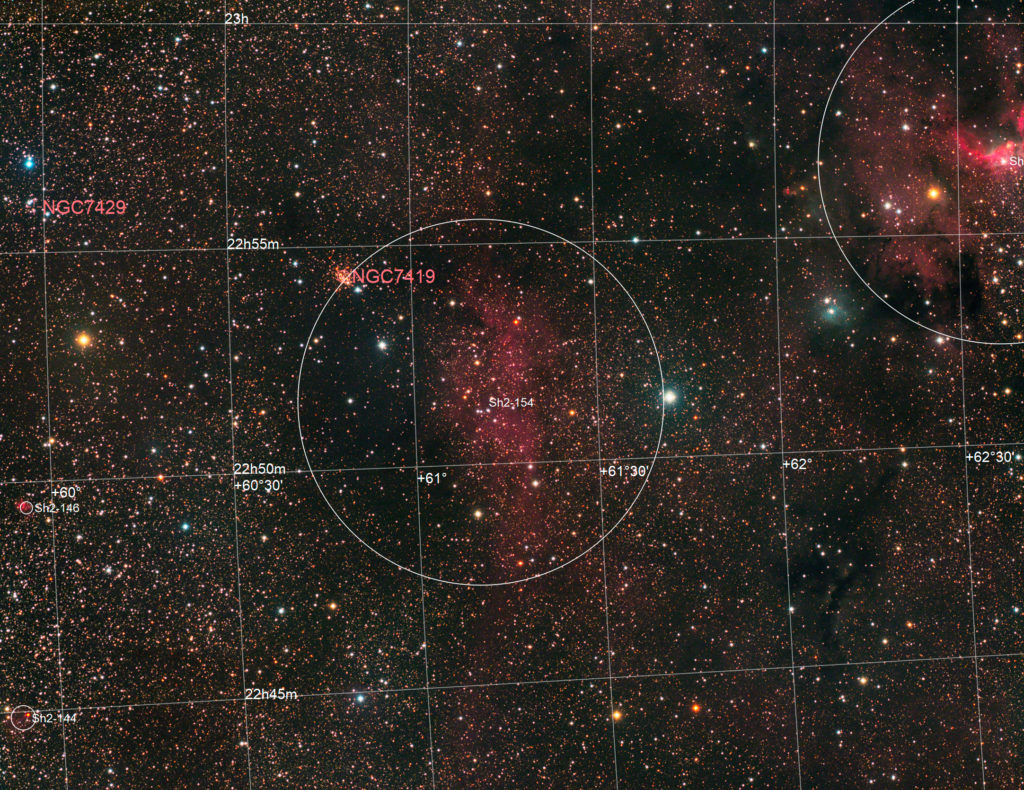
I was the first one to arrive for the star party on Saturday night at Look Rock South. It’s a beautiful view to the south looking into the Smokies.
We definitely had some clouds for the beginning of the night with some sucker holes now and then. I was never able to get off a 20 minute shot without the clouds rushing in within 10 minutes…
But things finally started to clear up and the Milky Way really started to pop out.
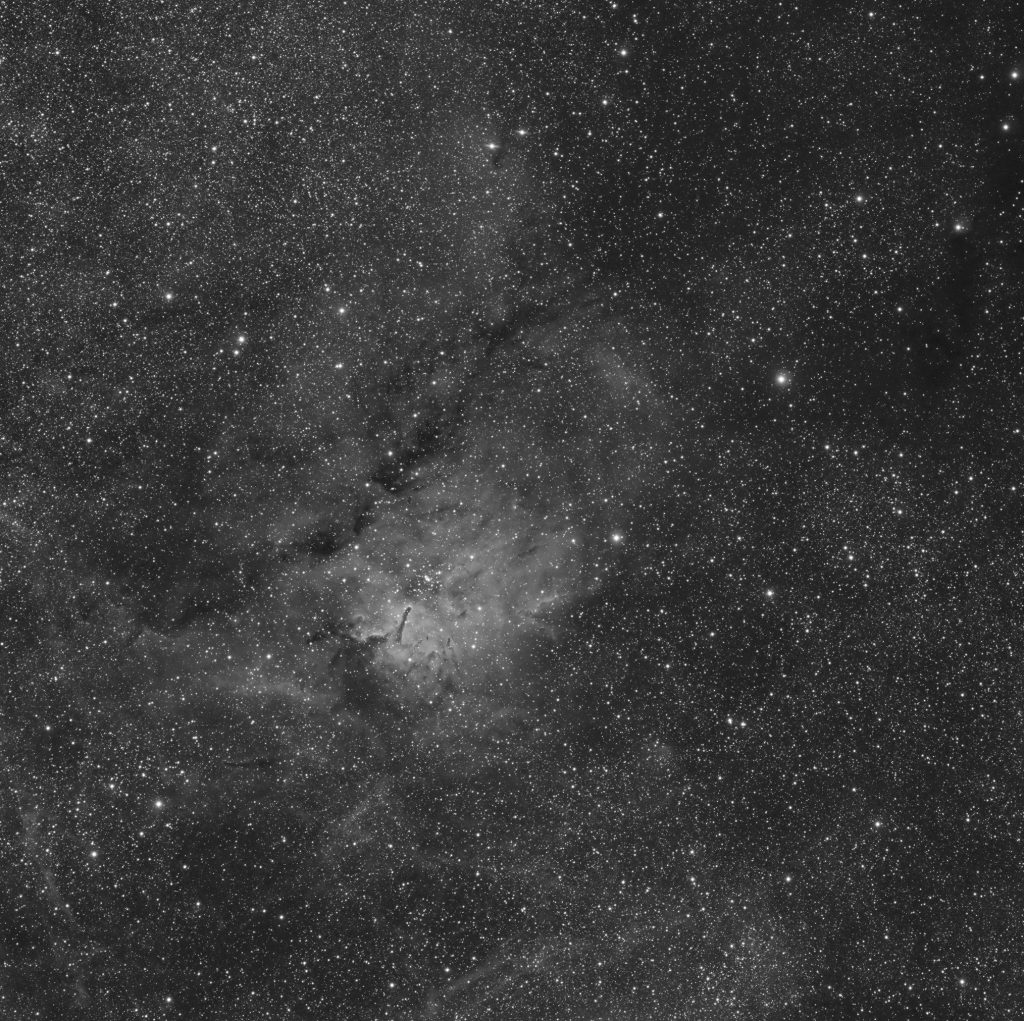
Emission Nebula NGC 6820 or Sharpless SH 2-86. AP130GTX with Field Flattener Custom 4″ OAG Apogee U16 CCD w/Baader Ha 7nm filter AP900GTO Mount 9x20min Exposures Image Scale 2.16 arcsec/pixel; reduced to 4.32 arcsec/pixel
Once it was cleared up I was off to take some test shots and validate the portable rig was ready for more serious projects. NGC 6820 AKA Sharpless SH 2-86 and all the surrounding emission and dark nebula has always been a favorite of mine. It’s located in Vulpecula not that far from M27, the Dumbbell Nebula. It reminds me of a less popular M16 with it’s gas and dust pillars and dark globules. Open cluster NGC 6823 resides in the midst of the nebula and is about 6,000 light years away.
NGC 206 is the brightest star cloud in the arms of the Andromeda Galaxy visible to us here on Earth. You often see M31 imaged wide field but there is a wealth of detail to be found in the star clouds and dust lanes that start to pop out with a little more focal length. Taken late last year from my back yard.
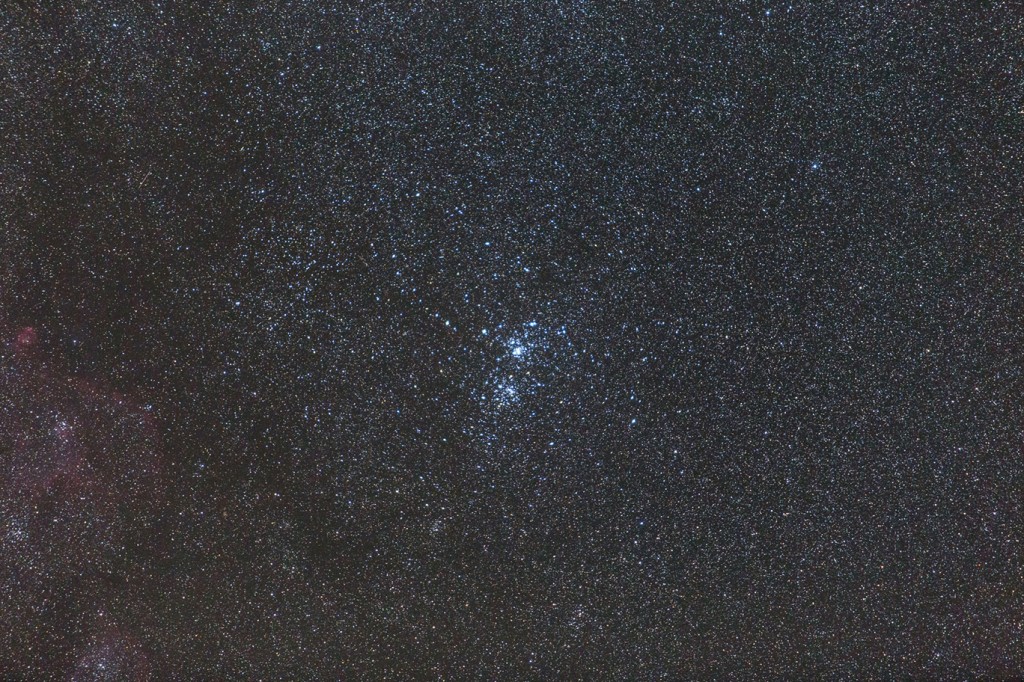
The Double Cluster – Caldwell 14 Open Clusters NGC 869 & 884 Canon 6D, ISO 1600, 60 seconds Canon 70-200 f/2.8 @ f/2.8 Tracking on Atlas EQ-G Cherry Springs Dark Sky Park, PA
A widefield shot of the famous Double Cluster from Sept 17th 2014 at Cherry Springs State Park. The Double Cluster is in Perseus but is in close proximity to Cassiopeia.